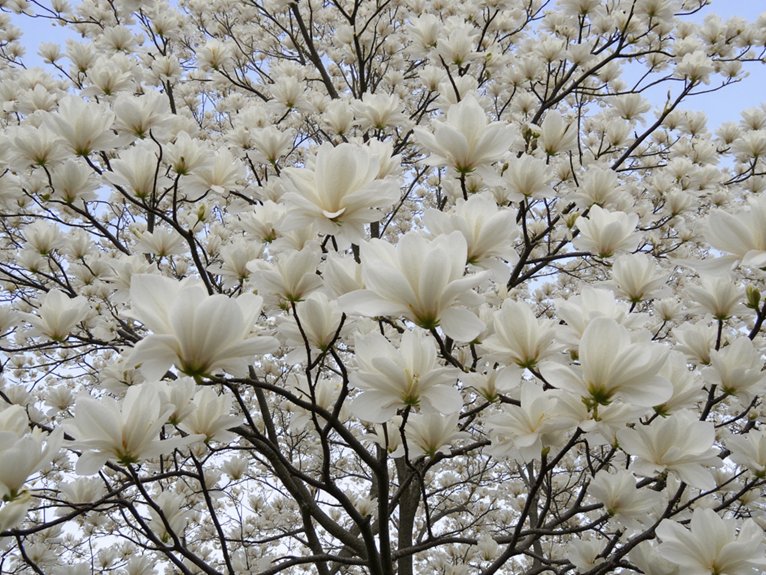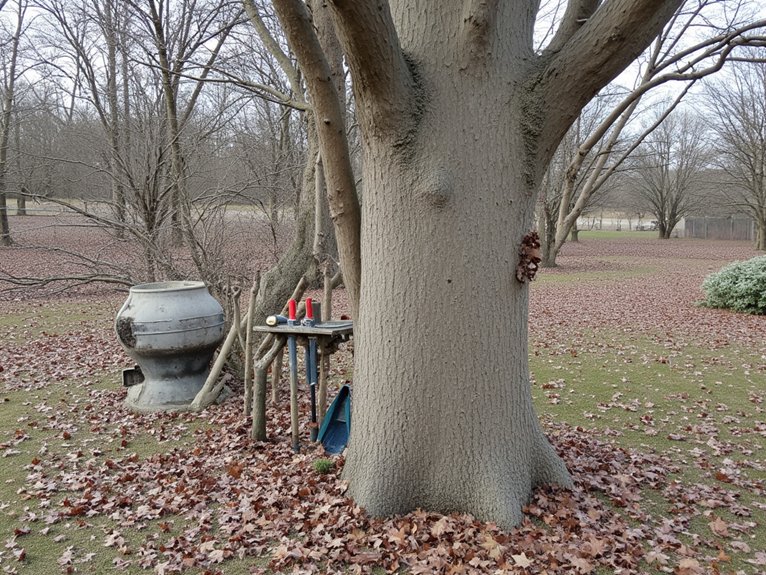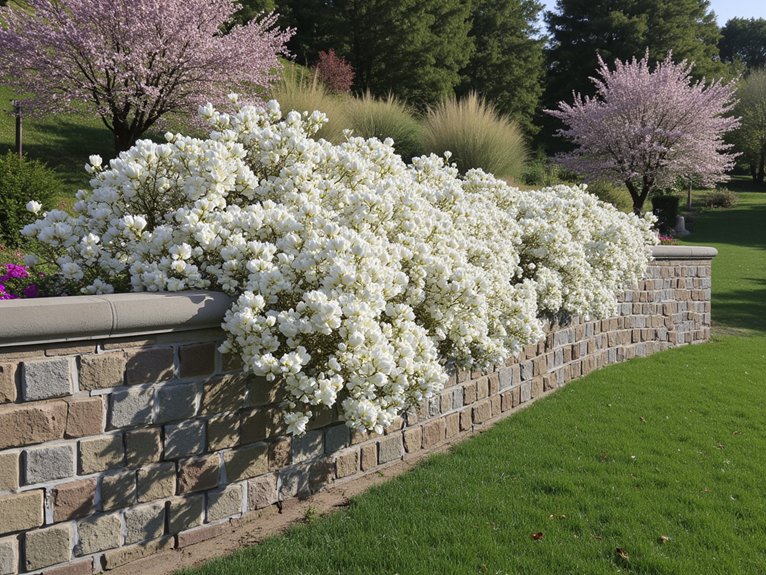White-flowering magnolia trees transform spring landscapes into breathtaking displays of nature’s elegance. These stately trees, reaching heights of 20-80 feet depending on variety, produce pristine blooms measuring 4-12 inches across. Botanical expert Dr. Sarah Chen notes, “The pure white petals create an ethereal effect, especially against deep green foliage.” Understanding specific growing requirements and seasonal timing guarantees these magnificent specimens will flourish and provide decades of enchanting springtime displays.
Contents
White-Flowering Magnolia Varieties for Your Garden

Several magnificent white-flowering magnolia varieties can transform any garden into a stunning springtime display. When considering variety selection, the Star Magnolia offers pristine white blooms reaching 15-20 feet tall, while the Kobus Magnolia produces elegant white flowers on branches extending 25-30 feet. For smaller spaces, the compact Encore variety grows just 8-15 feet with fragrant white blossoms. The Royal Star Magnolia delivers reliable early spring performance in zones 4-8, producing multi-petaled white flowers with delightful flower fragrance. The Merrill variety rounds out these options with its impressive 4-6 inch creamy white blooms.
Growing Conditions for Success With White Magnolias
Most white-flowering magnolia varieties thrive in specific growing conditions that gardeners must carefully maintain for ideal blooming success. Proper soil requirements include well-draining, slightly acidic soil with a pH between 5.5 and 6.5, enriched with organic matter.
When it comes to watering needs, magnolias prefer consistent moisture without waterlogging. New plantings require regular watering during their first growing season, while established trees can tolerate brief dry spells. During prolonged drought, supplemental watering keeps the soil moist to a depth of 12 inches.
For best growth, magnolias need protection from strong winds and adequate spacing to accommodate their mature size.
Seasonal Care and Maintenance Tips

Proper seasonal care of white magnolia trees follows a structured maintenance calendar throughout the year’s changing conditions. Spring requires light pruning techniques to remove dead branches and shape the canopy, while summer focuses on deep watering during dry spells. Fall maintenance includes mulching and pest management to prevent overwintering insects. Winter care emphasizes protecting young trees from frost damage.
“Timing is critical for magnolia maintenance,” notes botanist Dr. Sarah Chen. “Prune immediately after flowering to avoid removing next season’s buds, and maintain a 3-inch mulch layer year-round to regulate soil temperature and moisture.”
Best Planting Locations and Spacing Requirements
When selecting an ideal planting location for white magnolia trees, careful consideration of spacing requirements guarantees healthy growth and spectacular blooms.
For larger varieties like Southern Magnolia and D.D. Blanchard, allow 35-50 feet between trees. Compact varieties such as Little Gem and Fairy Cream need 10-15 feet of spacing. Full sun exposure is essential for most species, though some tolerate partial shade.
Plant magnolias at least 20 feet from buildings to prevent root interference. Consider overhead utility lines, as mature heights range from 15-80 feet. Well-draining soil and wind protection secure prime growing conditions.
Pairing White Magnolias With Other Landscape Elements

White magnolia trees create stunning focal points that can be artfully enhanced through strategic companion plantings and complementary landscape features. Under their canopies, shade-loving perennials like hostas and ferns provide contrasting textures while maintaining visual harmony. For colorful companions, consider planting azaleas, hydrangeas, or Japanese maples nearby to create seasonal interest.
Evergreen shrubs such as boxwood or holly can frame the magnolia’s base year-round, while spring bulbs like daffodils and tulips add early-season color beneath. Ground covers like pachysandra or creeping phlox help blend the magnolia into the surrounding landscape seamlessly.
